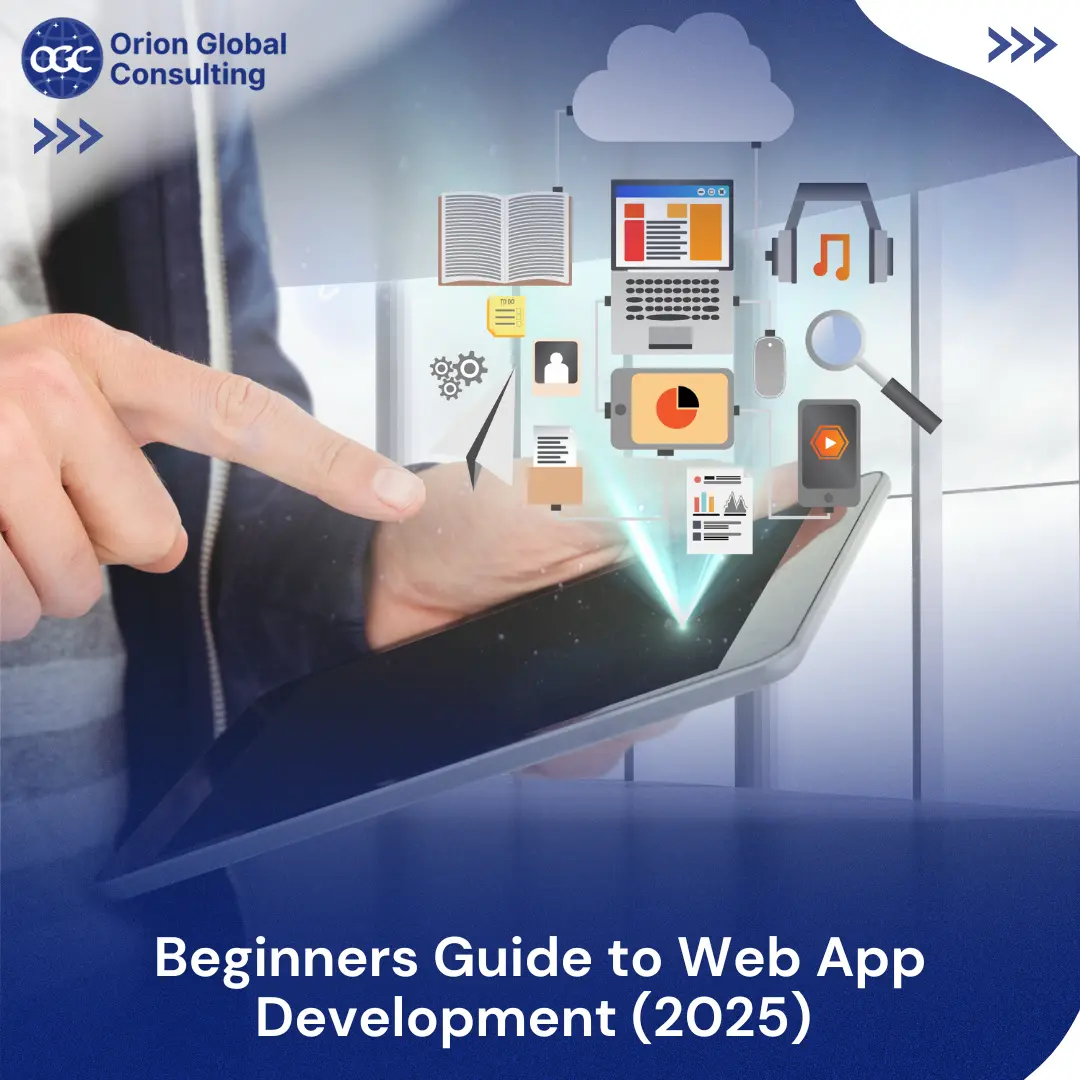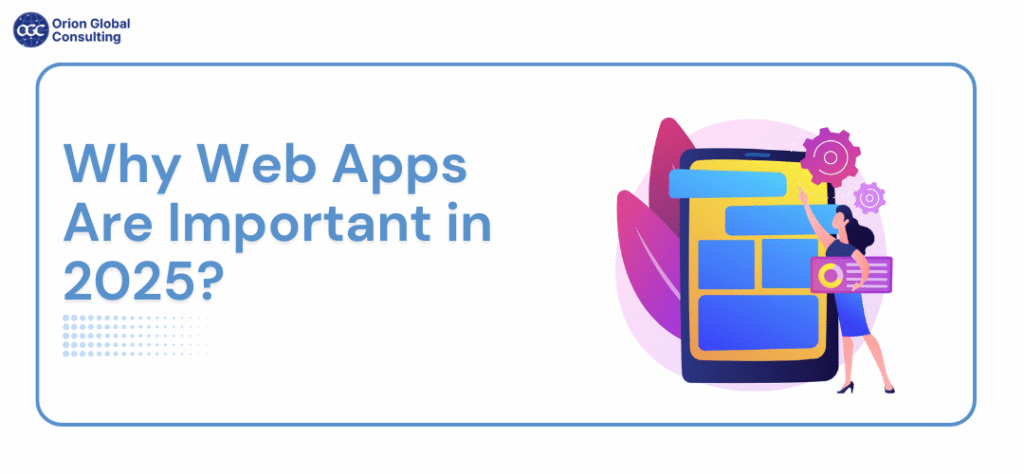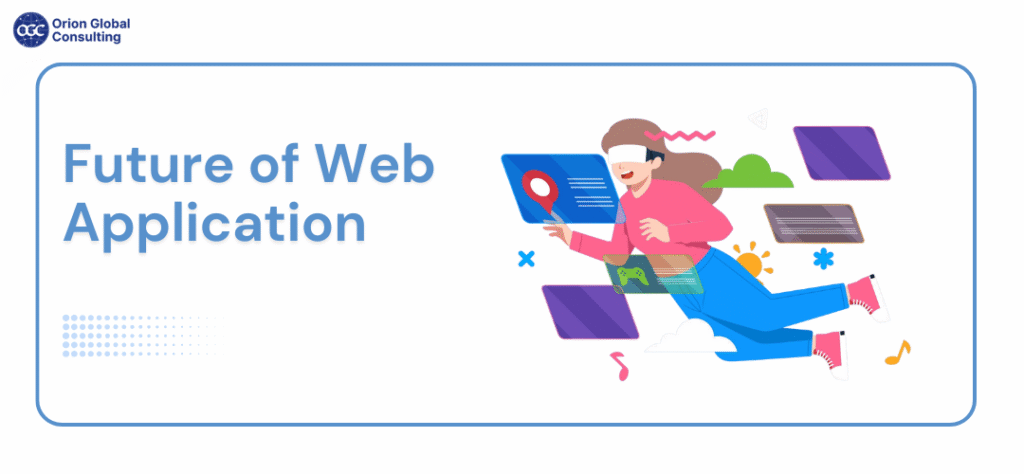
Making apps that operate in a web browser is the main goal of web app development. These applications help consumers in today’s society with anything from internet shopping to money management and work management. Better tools and quicker technologies have made developing web apps easier as we approach 2025. Understanding how web apps operate may lead to a lot of chances, even if you’re just starting out. The purpose of this Orion Global Consulting book is to assist beginners in understanding the fundamentals, including what it is, how it works, and the resources needed to produce robust online applications.
How do you make a Web App Development?
Web App Development is the process of creating software apps that run on a web server and can be viewed over the internet in a web browser. Web apps can be used right in any browser on computers, smartphones, or tablets. This procedure is different from desktop software, which needs to be downloaded and installed on a device.
Web apps like Gmail, Google Docs, Canva, and online payment tools are very popular. There’s probably a web application that makes it possible for you to book a taxi, order food, or get your funds in order. It combines front-end (what users see and interact with) and back-end (the code and database for apps) technologies to make an app that works properly.
Why Web Apps Are Important in 2025?

Web apps are becoming more important as more businesses and services move online. Web Application Development is a must for businesses that want to reach customers, get more done, and stay competitive.
Here are some of the main reasons why people want web apps:
- Accessibility: It can be used on any device with a browser.
- There is no need to install: People don’t need to get anything.
- Better updates: Developers can make changes to the app from one place, so users don’t have to do anything.
- Low-cost: Building and maintaining web application is often less expensive than building and maintaining native apps.
- Scalability: It’s easy for them to grow with your business.
How does making a web app work?
Developers take a set of steps to make a web app. Here is a list of the most important steps:
1. Making plans and studying
The first step is to figure out what the online app is for. Who is going to use it? What is it going to fix? What features do you need? We do this at the start of every project at Orion Global Consulting to make sure that the end result fits with our client’s business goals.
2. Make (UI/UX)
You can think of design in terms of both how the app looks (UI) and how people use it (UX). Apps should be fast, easy to use, and make sense. Before building something, designers often use tools like Figma or Adobe XD to make wireframes and models.
3. Developing the front end
The front end is what people see. It has buttons, options, forms, and images. This part was made with:
- HTML (the code)
- Style sheets (CSS)
- JavaScript (for playing games)
In 2025, well-known frameworks like Angular, React, and Vue.js speed up and improve the flexibility of front-end development.
4. Development of the back end
The back-end is like the web app’s engine. It takes care of requests, works with data, and links to systems. The following technologies are often used:
- Languages: Python, Node.js, PHP, Ruby, and Java.
- Databases: PostgreSQL, MySQL, and MongoDB
- APIs: These let the front end and back end talk to each other, or even with services outside the app.
5. Testing
The app is tested to find bugs and make sure it works right before it goes live. Some types of tests are:
- Function Testing
- Usability Testing
- Performance Testing
- Security Checking
6. Development
The Web App Development is put on a live server so people can view it after it has been tested. Deployment is often done on hosting services like AWS, Google Cloud, or Vercel in 2025.
7. Maintenance and Update
After a web app goes live, work on it doesn’t stop. The app needs to be updated, fixed, and made better regularly to keep it going smoothly and safely.
Types of Web Application Development
Web apps come in different types based on what they do and how hard they are to make:
- Static applications are simple, informational web pages.
- Dynamic Web Apps change data and let users connect with them.
- E-commerce Web Apps are like online shops where people can look at goods, buy them, and pay for them.
- Portal web apps are hubs that let you log in to services like email or panels.
This type of web application, like WordPress-based sites, is used to manage digital information.
Tools and Technologies for Web App Development (2025)
Web apps in 2025 are faster, easier and more powerful because of these new tools:
- React, Vue.js, and Angular are front-end frameworks.
- Frameworks for the back end: Django (Python), Express (Node.js), and Laravel (PHP)
- Firebase, MongoDB, PostgreSQL, and MySQL are all databases.
- Controlling changes: Git, GitHub, and GitLab
- DevOps and deployment tools include AWS, Vercel, Docker, Kubernetes, and Netlify.
- Figma, Adobe XD, and Sketch are design tools.
Orion Global Consulting uses the newest technologies to make sure that your web app is up-to-date, safe, and scalable.
What’s the Difference between Web Apps vs. Mobile Apps?
Many people confuse web apps with mobile apps. Here’s a simple breakdown:
| Feature | Web App | Mobile App |
| Access | Via browser | Downloaded on a device |
| Platform | Cross-platform | Platform-specific (iOS, Android) |
| Updates | Automatic | Require user action |
| Cost | Generally lower | Typically higher |
Progressive Web Apps (PWAs) are popular among companies in 2025. They are a mix of web and mobile apps that work in the browser.
Common challenges in Web App Development
Even if creating web apps is thrilling, there are certain difficulties:
- Security Risks: Developers need to guard against SQL injection and XSS attacks.
- Making sure the application functions and appears the same in all browsers is known as browser compatibility.
- Scalability: Making plans for expansion so the application can eventually accommodate additional users.
- User Experience: It requires effort and study to create user-friendly interfaces.
At Orion Global Consulting, we use best practices and a talented development team to tackle these issues head-on.
Future of Web Application

The creation of web apps is changing quickly. In 2025 and later, anticipate:
- AI Integration: More intelligent, customised online experiences.
- Applications that react to voice instructions are known as voice interfaces.
- Improved server technology and code optimisation have resulted in faster load times.
- More PWAs: Combining the finest features of mobile and online applications.


